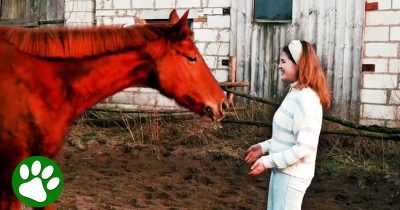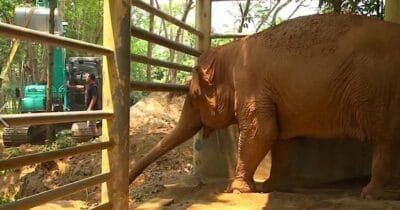
Whether it’s date night at the movie theater, or watching the game on TV with your buddies, or “Netflix and chill,” humans have long known that watching things together can be a great bonding experience.
But it turns out, we’re not alone: One recent scientific study has found that chimpanzees can also form social bonds by watching videos together.

The study, published by the Royal Society on July 17, questioned whether the seemingly human-specific phenomenon of bonding over watching things was also present in apes.
“Humans have an enormous variety of social bonding activities that we don’t see in other species because they’re somewhat cultural – for example listening to music or watching movies,” study co-author Wouter Wolf, a graduate student at Duke University, told The Guardian.
“We thought that this kind of connecting through shared experiences was uniquely human.”

The experiment was to see if apes could form a similar closeness simply by watching videos together. According to the BBC, about 45 chimps and bonobos were used in the study.
The apes were grouped into pairs and shown a short video. Eye-tracking devices were used to see that the apes were watching the screen, while fruit juices were used to keep them staying in place (who doesn’t like a snack while watching a movie?) Other apes were paired with humans.
So what movie did the chimps watch? King Kong? Planet of the Apes? That new Lion King remake? No, instead they simply watched a video of other chimpanzees playing with a baby chimp.
While the apes weren’t exactly binging Game of Thrones together, researchers found that the shared viewing experience did, indeed, seem to create a bond.
The study found the apes were quicker to approach their movie partner, and to spend more time in their proximity. The partners were also more likely to touch and groom one another.

The results are fascinating—they challenge not only what we knew about apes’ socialization abilities, but the evolutionary roots of socialization.
“Our results suggest that one of the most basic mechanisms of human social bonding—feeling closer to those with whom we act or attend together—is present in both humans and great apes, and thus has deeper evolutionary roots than previously suspected,” the study’s abstract reads.
“Animals can stand together and watch a waterfall, but they don’t seem to seek out those kinds of experiences,” Wolf told The Guardian. “So for a long time we thought they weren’t capable of processing that way or they weren’t feeling any psychological consequences from doing so.”
“It’s exciting that at least some parts of the psychology that we need to connect through shared experiences may actually have a slightly older evolutionary history than previously suspected.”

The study is also a reminder of what shared viewing experiences mean to humans—and what we might be losing in a time when we increasingly watch things on our own.
Wolf suggested that while social media sites fulfill a need to share things, it might not be able to compete with the simple act of sitting next to someone in a theater.
“Experiencing and sharing something between two people creates common ground,” he told the BBC. “If you go to the movies together, you’re sitting side by side, it’s a really social phenomenon.”
“But do you get the deeper experience from social media? The quality of such a social network online is different.”
It’s a lesson we can learn from the chimpanzees: if you want to be closer to someone, put down your phones and watch something together.
“Experiences are richer watching together,” Wolf says.

Share this fascinating news!






